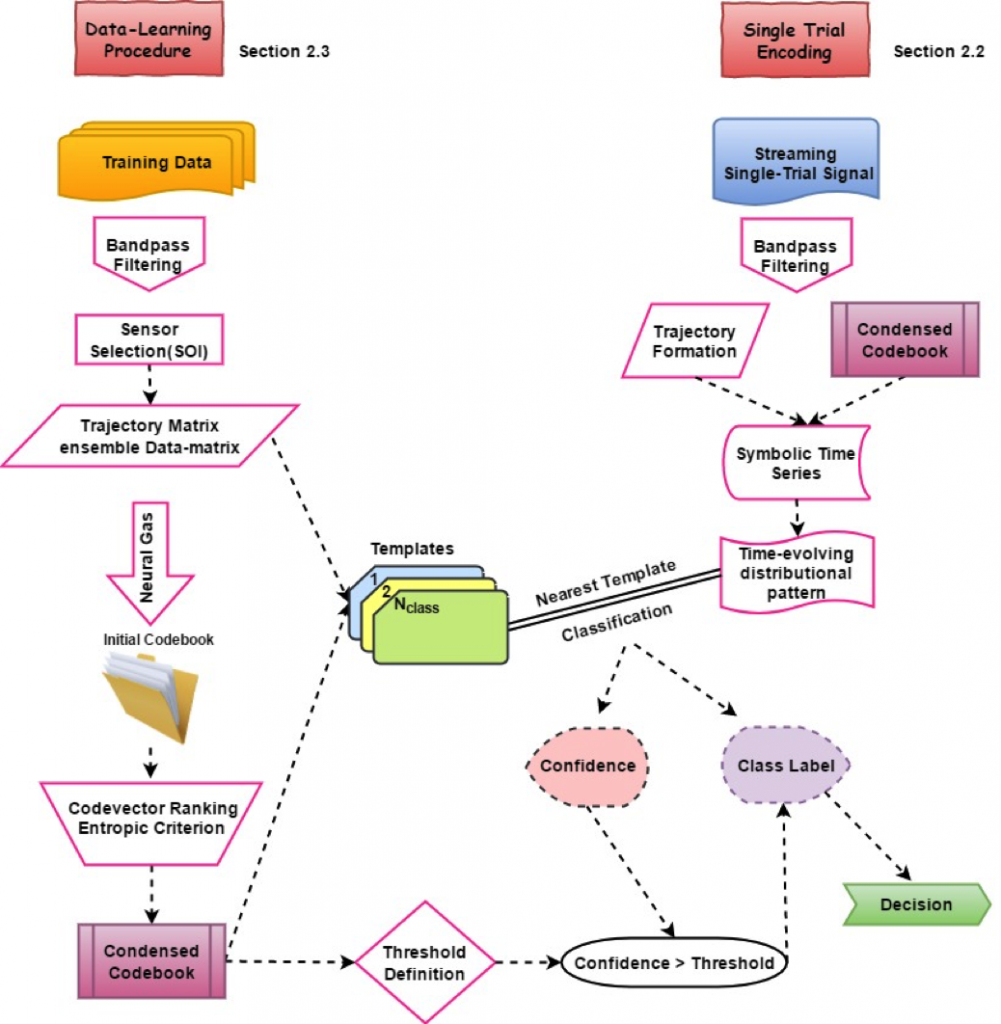We are very glad to share that CERTH’s paper on “Discriminative Codewaves: a symbolic dynamics approach to SSVEP recognition for asynchronous BCI” has been accepted for publication in Journal of Neural Engineering, one of the most well-established journals in the field with an impact factor of 3.465.
Objectives: Steady-state visual evoked potential (SSVEP) is a very popular approach to establishing a communication pathway in brain computer interfaces (BCIs), without any training requirements for the user. Brain activity recorded over occipital regions, in association with stimuli flickering at distinct frequencies, is used to predict the gaze direction. High performance is achieved when the analysis of multichannel signal is guided by the driving signals. It is the scope of this study to introduce an efficient way to identify the attended stimulus without the need to register the driving signals.
Approach: Brain response is described as a dynamical trajectory towards one of the attractors associated with the brainwave entrainment induced by the attended stimulus. A condensed description for each single-trial response is provided by means of discriminative vector quantization (DVQ), and different trajectories are disentangled based on a simple classification scheme that uses templates and confidence intervals derived from a small training dataset.
Main results: Experiments, based on two different datasets, provided evidence that the introduced approach compares favorably to well-established alternatives, regarding the Information Transfer Rate (ITR).
Significance: Our approach relies on (but not restricted to) single sensor traces, incorporates a novel description of brainwaves based on semi-supervised learning, and its great advantage stems from its potential for self-paced BCI. It is the scope of this study to introduce an efficient way to identify the attended stimulus without the need to register the driving signals. To this end, brain response is described as a dynamical trajectory towards one of the attractors associated with the brainwave entrainment induced by the attended stimulus. A condensed description for each single-trial response is provided by means of discriminative vector quantization (DVQ), and different trajectories are disentangled based on a simple classification scheme that uses templates and confidence intervals derived from a small training dataset. Our approach relies on (but not restricted to) single sensor traces, incorporates a novel description of brainwaves based on semi-supervised learning, and its great advantage stems from its potential for self-paced BCI. Experiments, based on two different datasets, provided evidence that the approach compares favorably to well-established alternatives, regarding the Information Transfer Rate (ITR).
